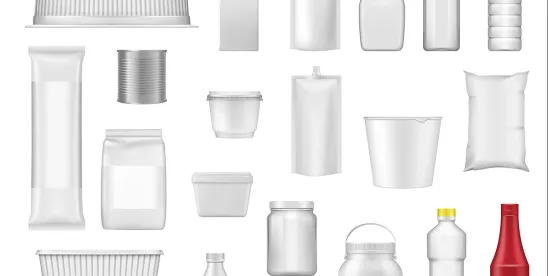Many consumer packaged goods (CPG) companies’ contract with other companies to manufacture goods sold under the CPG companies’ label or brand. These arrangements are called “co-manufacturing” or “contract manufacturing.” Co-manufacturing can provide additional production capacity and increased efficiency. Yet, co-manufacturing comes with a unique set of regulatory, contractual, insurance, and liability issues for all parties involved.
With foresight, both manufacturers and co-manufacturers can reap the benefits of contract manufacturing while mitigating their own risks. The following are ten important things that every CPG company should do to effectively manage their co-manufacturer relationships.
CLEARLY DELINEATE REGULATORY COMPLIANCE OBLIGATIONS
Consumer products are subject to a host of federal—and increasingly state—regulatory obligations. For products under the jurisdiction of the US Food and Drug Administration (FDA), for example, regulatory burdens apply to the composition of the product, the mandatory labeling elements, claims, and manufacturing of the product. The parties’ co-manufacturing agreement should delineate which party holds responsibility over each regulatory burden, as well as articulate issues such as documentation of such compliance, the parties’ relative ability to access such records, and any audit rights.
DETERMINE WHAT RECORDS NEED TO BE MAINTAINED TO SUBSTANTIATE PRODUCT CLAIMS AND INCLUDE PROVISIONS AS TO WHO IS RESPONSIBLE FOR RECORD RETENTION
Consumer products are increasingly subject to class action lawsuits and sometimes government enforcement actions when the claims on the products’ labeling or advertising are arguably false or misleading. Certain claims must be substantiated; even when substantiation is not required, records to substantiate claims will often be central to a defense. For example, a product representing itself as “natural” should consider what records are appropriate to substantiate the claims, from both a source and manufacturing process standpoint, if a private plaintiff comes calling. The parties’ co-manufacturing agreement should anticipate what records may be needed and assign responsibility for maintaining such records.
INCLUDE PROVISIONS TO ADDRESS WHEN THINGS GO WRONG
The co-manufacturing agreement should explain the parties’ responsibilities in the event of potentially adverse situations, such as a recall, a litigation challenge, or adverse inspection findings. While sometimes challenging and unpleasant to consider, thinking through these scenarios—e.g., how decisions will be made, the timing of such decisions, who will be consulted, and how communications will be provided—often leads to smoother responses to them.
CAREFULLY CONSIDER INDEMNITY PROVISIONS
Indemnity obligations are central to allocating risk in a co-manufacturing relationship. Parties should consider these in the early stages of their relationship while their interests are aligned. There are significant benefits to discussing each party’s expectations, and these conversations can avoid disputes if an issue arises. The indemnity provision should consider issues both relating to the product itself and to its packaging—such as labeling claims and warnings—especially if the parties’ relationship assigns differing responsibilities for product and packaging. Then, if a problem arises, including those related to packaging or product, clearly articulated indemnities can work to protect both parties.
STANDARDIZE KEY TERMS
To ensure consistency across contracts and co-manufacturing relationships, companies should standardize key contractual terms, such as indemnity and insurance requirements. Companies then should adopt procedures to ensure that the company’s sales team does not deviate from the standardized terms without appropriate approvals.
UNDERSTAND THE SCOPE OF INSURANCE REQUIREMENTS
In placing insurance coverage, companies should confirm compliance with any contract terms that require them to acquire particular types or amounts of insurance or to include specified coverage terms in their policies. Companies should carefully consider whether and how to include their supply chain partners as “additional insureds.”
ENSURE THIRD PARTIES FULFILL THEIR INSURANCE OBLIGATIONS
Companies should regularly verify that their contractual counterparts maintain all required coverages at least by obtaining certificates of insurance upon each renewal. Contracts also should require disclosure of the insurance policies themselves for any required coverage, at least upon request.
CONSIDER MAINTAINING “SPECIALTY” COVERAGE
In addition to standard liability and property policies, companies should consider whether to maintain (or require their supply chain partners to maintain) “specialty” coverage for events, such as product contaminations, product recalls, cyber incidents, or other losses that may affect co-manufacturers, resulting in losses.
WHEN ISSUES ARISE, CONSIDER ALL SOURCES OF INSURANCE COVERAGE
The coverage available under standard liability and property policies may be broader than it first appears. When a loss takes place, companies should consider all sources of potential recovery and place those insurers on immediate notice, even if coverage is not initially obvious.
ACT QUICKLY IN MAKING AN INSURANCE CLAIM
Many policies contain timing requirements for notice, proofs of loss, or other submissions. When a loss takes place, companies should ensure compliance with all timing requirements, or secure needed extensions from relevant insurers, to avoid forfeiting coverage.







 />i
/>i
